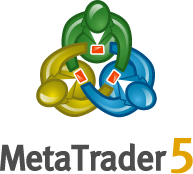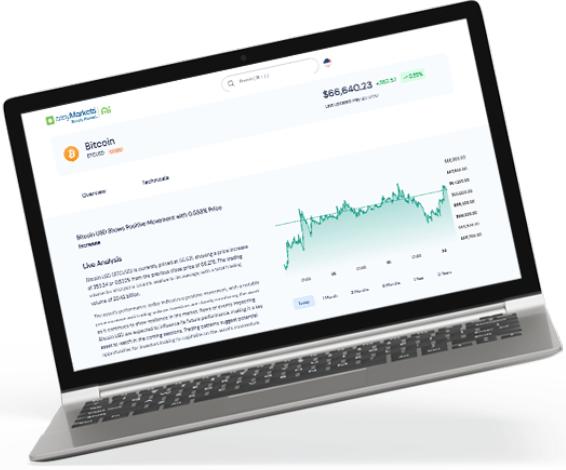What If… the Fed Cuts Rates to 0.5%?

It’s late December 2025, and in a surprise move, the US Federal Reserve announces a Fed interest rate cut all the way down to 0.5%. This is a dramatic shift that many believed was off the table, but here we are. The motivation? A wave of new tariffs imposed by the returning President upon re-entering office, sparking widespread concern over rising costs and stalling economic growth. As imports become pricier, both businesses and consumers feel the pinch, and the Fed decides it’s time for an aggressive measure to keep the economy on its feet.
Naturally, a Fed interest rate cut to such a historic low sends ripple effects across the markets. Dollar weakness, surging equities, and heightened real estate prices are just the tip of the iceberg. It also ushers in the possibility of big money looking beyond US shores, seeking better returns in emerging economies – especially if global tensions cool down and war-torn regions open up to reconstruction. In this article, we’ll explore the background of how tariffs led to this bold decision, dive into the immediate consequences of a 0.5% rate, and consider what the coming year might look like as this extraordinary move shapes new economic realities.
How did we get here?
The road to a 0.5% Fed interest rate cut starts with a familiar face in the White House. The re-elected President kicked off a new term by imposing tariffs on imports from Mexico and Canada, just as promised on the campaign trail. The argument is the same as before: protect American jobs, encourage domestic manufacturing, and level the playing field. But the outcome is never quite that simple.
Tariffs often trigger a chain reaction because, eventually, someone has to pick up the tab. Sometimes consumers pay higher prices in stores. Other times, US importers absorb the cost and watch their profits shrink. Or foreign exporters might reduce their wholesale prices to stay competitive. No matter how you slice it, someone shoulders the financial burden, and overall economic strain tends to follow.
Throughout 2025, as tariffs expand to other countries, prices inch upward on everything from electronics to fresh produce. Businesses feel forced to pass on at least some of these costs. Confidence wavers. Nervous investors wonder if this is the start of a new trade war, and consumer spending starts to slow.
By December, a cautious Fed sees warning signs of a broader economic slowdown and steps in with an extraordinary Fed interest rate cut to 0.5%, hoping to steady the ship and keep people spending through cheaper borrowing.
The tariff cascade
The strategy goes beyond just Mexico and Canada. Echoing similar actions from nearly a decade earlier, the administration targets trade partners across the globe – either to penalize ‘unfair’ practices or gain leverage for future trade negotiations.
While a few domestic industries initially enjoy some perks, many US businesses that rely on imports for their supply chains encounter price spikes, thinning out their profit margins.
Consumers also start feeling the squeeze. Everyday goods, from clothing to smartphones, become more expensive. People begin to think twice before hitting that ‘Buy Now’ button. Discontent grows louder, and Washington faces criticism for using tariffs – an imperfect tool that can backfire without precise planning.
The Fed’s drastic move
Seeing these pressures add up, we end up with a Fed interest rate cut. By slashing rates to 0.5%, it aims to offset the drag of higher prices by making borrowing cheaper. It’s a huge deal: dropping from an earlier benchmark rate of around 4.5% means borrowing costs are reduced by nearly 90%.
Mortgage rates, auto loans, and credit card APRs all become more affordable. But big moves often come with big consequences, and the Central Bank is aware this Fed interest rate cut could jolt not just the US economy but global markets, too.
Ripple effects

Come January 2026, the US wakes up to a new financial reality. A 0.5% Fed interest rate cut is nearly unheard of in the modern economy, and it sets off a series of changes – some expected, others more surprising.
- Dollar weakness (-10% Drop)
With such a Fed interest rate cut, foreign investors see fewer reasons to park money in US bonds. Demand slips due to dollar weakness, and its value falls by around 10%. This might help American exporters for a while, but overseas vacations just got more expensive for US travelers. - Equities surge
Stocks usually love cheap money. Companies can borrow cheaply to invest and expand, while investors bored with low returns on bonds pivot to equities. Liquidity floods the market, and the S&P 500 enjoys a notable rally, especially in Fed interest rate cut-sensitive sectors like real estate. - Soaring real estate prices
Homebuyers and investors rush in, thanks to mortgages at rock-bottom rates. Housing prices spike anywhere from 10% to 20%, depending on the region. Sellers rejoice, but house hunters on tighter budgets might find themselves priced out. - Big boost in consumer spending
Cheaper credit card rates and personal loans prompt people to keep shopping, nudging consumer spending up by about 10%. Retailers are relieved to see some cushion against higher import costs – at least in the short term. - Money flows abroad
As the US becomes a less attractive ‘safe haven,’ investors scout higher yields in emerging markets. Places once deemed too risky, especially regions stabilizing after conflicts, might suddenly look worth the gamble. If certain sanctions are lifted, rebuilding efforts could draw in large amounts of US capital. - Less foreign investment in the US
For international investors, dollar weakness and a drastic Fed interest rate cut means returns on US assets could be underwhelming. Add the uncertainty of ongoing trade tensions, and many may opt to move their funds elsewhere, further dampening long-term growth prospects.
Looking ahead
Now let’s peek into the next year – 2026 going into 2027 – to see how this all settles in. While a cheaper dollar gives exporters a short-term advantage, it can also feed inflation if import prices keep rising due to tariffs. Meanwhile, consumer demand might hold steady for a while, but any sudden uptick in the cost of everyday goods (due to both tariffs and weaker live currency rates caused by the Fed interest rate cut) could sour the shopping mood.
Over in the housing market, initial excitement could lead to affordability concerns if wages don’t keep pace with rising property values. Nobody wants a 2008-style bubble, but very low rates can inflate real estate prices quickly. The Fed might face pressure to tap the brakes, yet raising rates too soon could choke off the very growth it’s trying to encourage.
On the international front, the big story is the likely shift of investment capital toward emerging markets and post-conflict regions. If certain peace deals hold up, countries rebuilding from war or sanctions might become hot spots for global capital. This would continue eroding the US’s long-held safe haven status.
At the same time, alliances might shift as foreign governments find new economic partners following the Fed interest cut. All of these factors suggest a more fluid, less predictable global landscape, one where low rates at home mean higher stakes for everyone.
What this means for traders today
But for those who trade USD? What stakes are at play? A day after the bombshell Fed interest rate cut, traders are already recalibrating strategies. There’s no shortage of volatility to capitalize on, but the scale of this Fed interest rate cut demands caution. Investors bullish on real estate and equity markets might score quick wins, but the longer-term picture isn’t guaranteed, especially if inflation creeps up or consumer sentiment dips.
When it comes to currencies, dollar weakness and an intense Fed interest rate cut could be an opportunity for those who typically trade forex pairs, although timing is key, markets may move faster than expected when geopolitics and monetary policy collide.
For those exploring CFDs, the usual rule applies: diversify your positions, keep an eye on any upcoming Fed interest rate cut, and stay prepared for sudden swings. The US will write a new chapter in monetary history, and how well traders adapt may set the tone for their success in the post-tariff, ultra-low-rate era.























